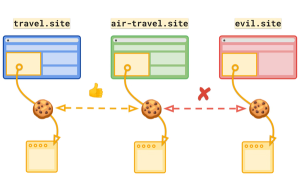Five Innovation Practices To Help Business Owners Navigate Uncertainty

The economic landscape is changing at an accelerating speed. More than ever, a growing number of businesses are having a hard time navigating marketwide complexity, driven by macroeconomic volatility and unprecedented levels of uncertainty.
Navigating these business challenges through traditional methods of increasing productivity and better cost management has proven to be less successful. Dynamic problems and new threats have meant that businesses require the novelty of innovation and adoption to find new pockets of growth opportunities to solidify their long-term success.
The fast-changing environment has put business owners on an inevitable conquest to build a business model that creates more room for growth through innovation while looking at adjacent pathways that can help develop breakthrough innovation efforts.
Creating more room for growth and change has seen roughly 97 percent of businesses outperform their competitors if they were willing to activate organizational growth pathways.
While it’s possible to measure a business’s success based on its capacity to navigate risks and uncertainty, it’s just as important for them to identify new opportunities, while mobilizing their resources to develop more innovative strategies and grow beyond a “business as usual” mindset.
Make Room To Identify New Risks And Opportunities
In a dynamic marketplace, business owners are required to continuously think forward, allowing more room to find potential risks, and mitigate the potential effects they may have on the business, employees, and the bottom line.
However, in a complex and challenging economic environment, businesses need to direct their resources towards avenues that can help them enlarge their innovation, while at the same time developing ways to identify possible risks.
Investing in business model innovation not only gives businesses the competitive edge it requires to stand in the marketplace, but it also ensures that the overall structure is continuously being challenged and revived in a way that helps the company scale high-innovation segments.
Establish Short And Long-Term Innovation Goals
Having more dynamic efforts concentrated on short and long-term innovation goals ensures that the business can navigate marketplace challenges as they arise while looking forward to establishing cost-effective business model practices.
With the approach of having short and long-term innovation goals, the company doesn’t only see reductions in costs or an increase in productivity, it however opens new pathways of development for future projects.
Conducting a review of the businesses’ innovation profile enables entrepreneurs and business owners to focus on how short-term formula rationalization can lead to opportunities for redirecting financial resources for long-term investment into different products, services, and other innovation pathways.
Tap Into Systems Thinking Strategies
Systems thinking is the result of resolving real-world issues through strategic and innovative thinking structures. These days it’s crucial for every business owner to have a firm understanding of the challenges they are faced with. Ranging from environmental, social, and governance (ESG), growing interest in these areas could already see businesses adapting their systemic problem-solving abilities.
It can be hard to resolve systemic problems if they are still unknown, or seemingly out of reach. Business owners can direct their focus to overcome challenges that are well within reach, allowing them to make a direct impact on their internal operations.
Once they have identified how these challenges are potentially weighing down on their business, whether it’s revenue or productivity, they will then have the ability to identify different opportunities and challenges that require more long-term investment.
Taking on a more systems thinking approach allows businesses to be complacent with their goals, but over time allows them a higher commitment to achieve long-term goals that are more impact-driven.
Develop Open Innovation Business Efforts
In most business-related examples, owners and entrepreneurs tend to look inward at their intellectual efforts as a method of navigating challenging marketplace conditions.
There are cases where the internal innovation process could help translate the figurative defense of the business in times of uncertainty, however, being more accepting of a culture of open innovation could bring new, and more proactive solutions.
Using open innovation, companies can leverage different pockets of the creator economy. This allows them an opportunity to tap into new technologies, ideas, concepts, and problem-solving. While open innovation can create more inclusive opportunities for thought leaders, it can however help companies define their short and long-term goals more clearly.
Being more purpose-driven, but at the same time allowing more open opportunities for innovation not only gives businesses an ability to have a more dynamic edge above their competitors. It could also mean that they are leveraging different elements of the economic environment that could help improve innovation goals.
Develop A Business Model For Changing Conditions
While companies need to create more innovation opportunities within their business structure, this would be hard to formulate without the right business model.
The current marketplace is evolving, consumers are demanding new and more innovative solutions for dynamic problems, including environmental, social, and corporate governance. This prompts businesses to take a more proactive stance to find viable solutions that deliver long-term results within the current climate that they’re operating in.
Looking forward, this would mean that businesses need to develop a business model that can function under changing conditions. As one problem reveals itself, a different approach is needed to establish working solutions.
In a complex environment, businesses are required to have adequate tools and resources directed to their innovation needs.
During times of uncertainty, business owners and entrepreneurs will need to focus on how their company can withstand market turmoil against the backdrop of a changing marketplace and consumer behavior. There’s always a better opportunity for business to grow into new adjacent pathways, however, this isn’t possible without the right resources directed towards innovation opportunities.
Bringing into focus what is important for the business at the moment, and how economic challenges will require dynamic solutions can help business owners and entrepreneurs discover a broad range of fresh insights that will equip them with the right responses in an uncertain environment.
Published First on ValueWalk. Read Here.
Featured Image Credit: Photo by Mizuno K; Pexels; Thank you!
The post Five Innovation Practices To Help Business Owners Navigate Uncertainty appeared first on ReadWrite.
(2)








